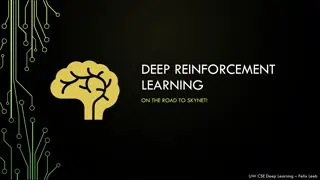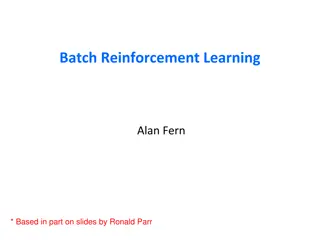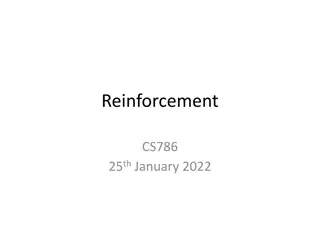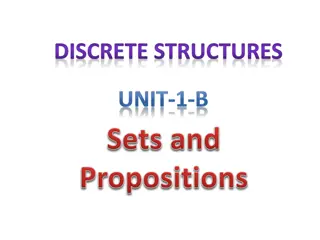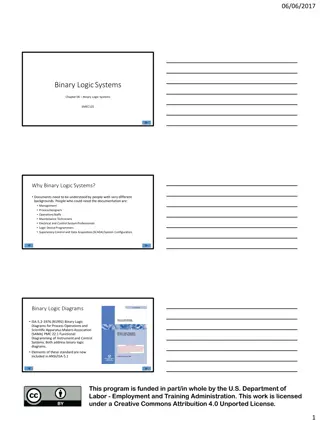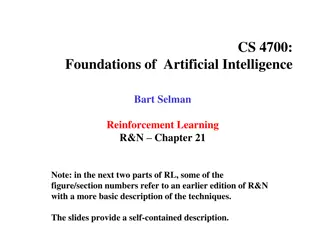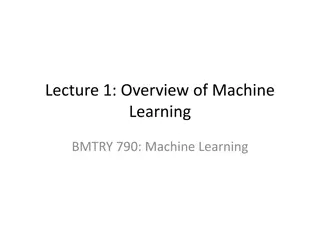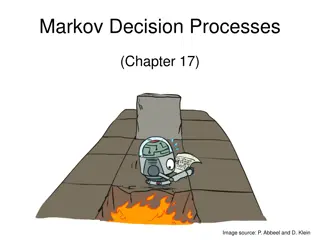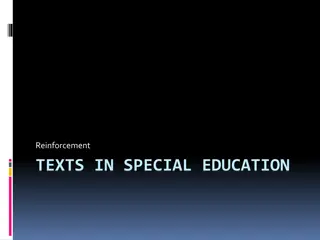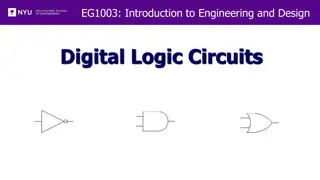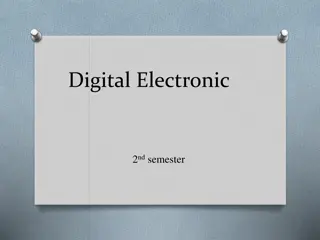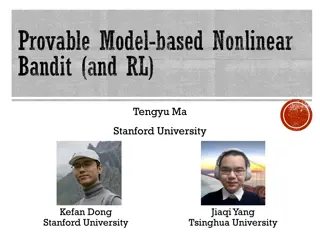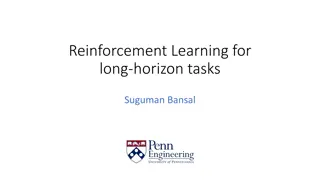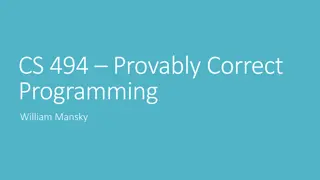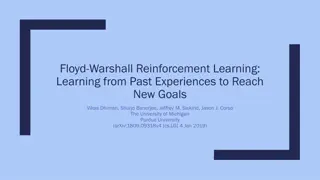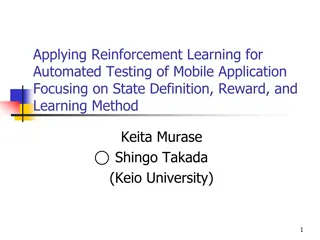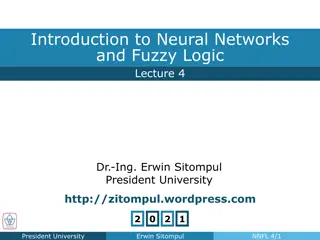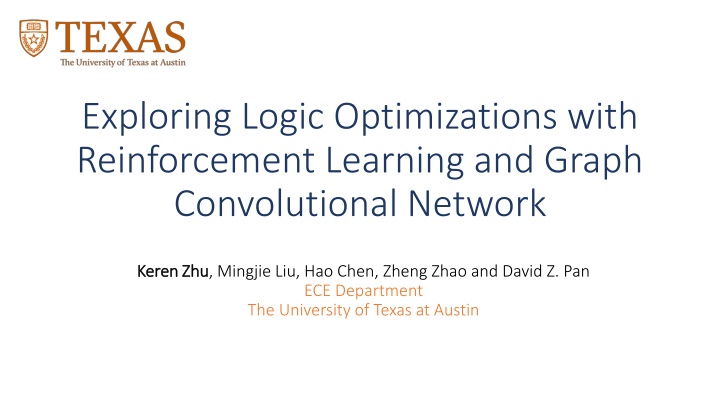
Optimizing Logic Operations with Reinforcement Learning
This work delves into optimizing logic operations in VLSI design using reinforcement learning and graph convolutional networks. It focuses on exploring the optimal operation sequence, leveraging heuristic methods, and efficiently navigating the search space to find effective sequences for new circuits.
Download Presentation

Please find below an Image/Link to download the presentation.
The content on the website is provided AS IS for your information and personal use only. It may not be sold, licensed, or shared on other websites without obtaining consent from the author. If you encounter any issues during the download, it is possible that the publisher has removed the file from their server.
You are allowed to download the files provided on this website for personal or commercial use, subject to the condition that they are used lawfully. All files are the property of their respective owners.
The content on the website is provided AS IS for your information and personal use only. It may not be sold, licensed, or shared on other websites without obtaining consent from the author.
E N D
Presentation Transcript
Exploring Logic Optimizations with Reinforcement Learning and Graph Convolutional Network Keren Zhu Keren Zhu, Mingjie Liu, Hao Chen, Zheng Zhao and David Z. Pan ECE Department The University of Texas at Austin
Background: logic optimization in VLSI design Modern VLSI design: Abstract architecture -> physical layout System Specification RTL Logic synthesis and technology mapping: RTL -> Netlist Logic Synthesis Technology Mapping Logic optimization: Optimize the logic in logic synthesis Sequential and combinational Physical Synthesis This work focus on combinational logic Manufacturing
Combinational logic is often represented as logic graph Standardized logic graph AIG, MIG etc. This work focus on AIG Operations on graph can preserve the Boolean logic but change the graph Balance, rewrite etc. Modern heuristic use a sequence of operation to optimize the logic graph in number of nodes and logic depth
Question: what is the optimal operation sequence? There are some well-known heuristic E.g. resyn2 in ABC The effectiveness of an operation sequence is design-dependent Different circuits have different optimal operation sequence Question: how to efficiently explore the search space and find good sequences for a new circuit?
Operation sequence as an MDP The user can observe the current AIG graph ABC The user command ABC to execute an operation on the graph Operation New graph The user then observe the new graph The user want to optimize the graph by repeating this process User
Operation sequence as an MDP Then we can formulate this process as a Markov Decision Process (MDP) Environment Action: operation State: logic graph Reward: improvements Action State Reward The process is of Markov property Each operation on the graph is deterministic and not depend on the past The state is fully observed Logic graphs contain all the information we need Agent
Key challenge: state representation Reinforcement learning (RL) algorithms often need vector state representation with fixed dimension Graph statists can help describing the graph, but not enough We also use past action record and graph convolutional network for better state representation An AIG graph Courtesy: [Yu+ TCAD18]
Graph convolution network for graph vectorization We use graph convolutional network for assisting state representation We use the type as node feature and let graph convolution to aggregate the neighboring features into the nodes We take the mean of the graph nodes to obtain a vectorized representation Node Average Graph Representation
Policy Gradient RL agent Policy gradient methods estimate the value of actions Action Value The RL agent explore the space and update the action value estimation We use a simple network for estimating state value as baseline Baseline
Experiments: average return We use the RL agent to generate operation sequence of 18 The same length of running resyn2 twice We compare the total rewards over episode RL agent is learning something
Experiments: optimizing the number of nodes Optimize number of nodes Initial Resyn2 twice This work (averaged) Benchmark # Nodes Depth # Nodes Depth # Nodes Depth i10 2675 50 1804 32 1730.2 40.3 c1355 504 25 390 16 386.2 17.6 c7552 2093 29 1416 26 1395.4 27.4 c6288 2337 120 1870 89 1870.0 88.0 c5315 1780 37 1295 26 1337.4 27.2 dalu 1371 35 1103 31 1039.8 33.2 k2 1998 23 1186 13 1128.4 19.8 mainpla 5346 38 3583 26 3438.4 25.0 apex1 2665 27 1966 17 1921.6 19.2 bc0 1592 31 899 17 819.4 18.6 Ratio 1.0 1.0 0.717 0.702 0.698 0.757
Conclusion RL algorithm can be applied to the problem of finding a good operation sequence in optimizing combinational logic graph Graph mining techniques are useful in extracting information into vectors The source codes have been released to public https://github.com/krzhu/abcRL
Future directions How to obtain how information from the graph? Graph convolutional network cannot extract the dedicated logic hierarchy from the graphs The usage of past experience in state representation break the perfect Markov property More principal method on vectorizing the graph A more generalized action space Currently assume a small discrete action space. How to extend it to general continuous space? Multi-objective optimization More efficient search space exploration



